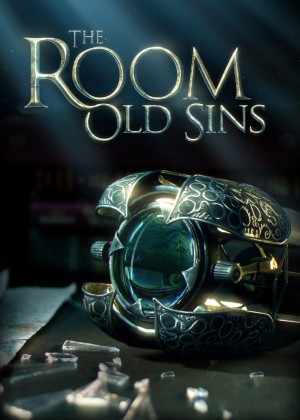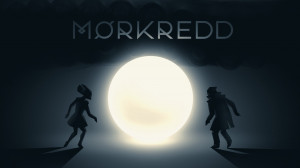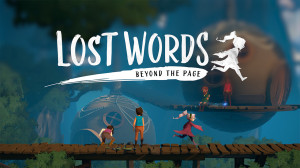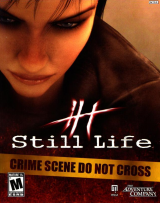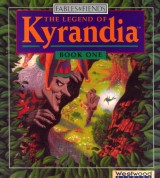Review for Strangeland

Wormwood Studios made an impressive debut in 2012 with Primordia, so expectations were high for their long-awaited follow-up, and it does not disappoint. Unlike their earlier postapocalyptic sci-fi adventure, Strangeland is a surrealist, psychologic horror adventure that feels like it was drawn by H.R. Giger, designed by M.C. Escher, and written by Aeschylus. It’s a polished, well-written, well-acted and intriguing interactive nightmare that is easily worth your time—if you can stomach the unrelenting depressive tone and disturbing imagery.
Waking on a floating island in what can only be described as an abstract, twisted carnival dreamscape called Strangeland, you take control of a confused, dishevelled man with no memory who witnesses a woman fall to her death in a well. Who you and the woman are becomes a mystery to unravel, and destroying the Dark Thing, a shadow-monster living atop the highest point of the carnival, becomes your main objective in this pursuit.
It wouldn’t be a carnival without circus tents, and the first one you come across happens to have a giant clown head above its door—a living clown head that makes a joke each time you pass through the tent’s doors. This is something you’ll be doing often because there’s a lot that can harm you in this world, and each time you die you rematerialise in the hub area again. There are a handful of locations to explore that offshoot the main tent, and you will backtrack through them frequently in Strangeland’s five-ish hours as you complete puzzles that unlock new things in old places.
Locales are what you’d expect from a circus-gone-wrong scenario: dilapidated tents, broken rides, sinister clowns. As grotesque as they may seem on the surface to begin with, sometimes you get to see them as they really are when the scenes shift to an even more thoroughly distorted version of reality. By doubling up with distinctly alternate versions of the same settings, Wormwood have made smart use of the game’s limited locations throughout.
Each area is packed with interesting characters and creatures to discover, like the talking crow-ravens, a creepy old man with no eyeballs who muses philosophically and speaks in riddles, and an anthropomorphic furnace that can help or hinder your efforts. Thematically, the grim motifs of decaying-but-living structures, cosmic beings, sacs of disgusting organic matter and dripping things and darkness fit with Strangeland’s surreal trappings. And though it doesn’t appear so at first, everything in this esoteric Giger-esque world – human or machine, living or dead – is connected in some way, and you’ll gradually come to understand how, though never in straightforward ways.
All this is magnificently rendered in 640x360 pixel art drawn with great skill, though be forewarned that the imagery is very mature, disturbing and downright disgusting in places. Animations like walking, moving limbs, and even blinking are all silky smooth, with no jerkiness perceptible, while other small touches such as your character’s hair flopping and bobbing as he moves really add to the immersion. There’s also a picture-in-picture system at times, where portraits of the relevant characters pop up to give you a closer, more detailed look at them. These are animated as well, and one scene of a tear rolling down a woman’s face had me wowed. Even the menus are animated and noticeably reflect the game’s dark themes, with vials filling with liquid as you hover over different option buttons.
One issue, however, is the muted colour palette used. Strangeland is an intentionally gloomy place, granted, but the grey-brown hues used throughout most of the game can make it hard to spot objects you’re supposed to interact with. One notable example was when I had to pry a metal bar from a structure, but it was so camouflaged that it wasn’t until I happened to mouse over the bar that I realised it was something I could use. While the smart cursor will alert you to any hotspot when moused over, a highlighter would have helped reduce a bit of pixel hunting with some of the smaller, more concealed objects of interest.
Mechanically, there’s your usual point-and-click fare of left-clicking to interact with hotspots and right-clicking to examine them, with an inventory key bringing up your acquired objects and a bar with various menu options pulled down by moving the cursor to the top of the screen. Strangeland also has a handy system that lets you use your scroll wheel to cycle through your inventory items, saving you from navigating through a secondary screen over and over again. You need only open the inventory proper when you want to combine items, which allows the moment-to-moment gameplay to flow free of frustration. Your walking speed isn’t the fastest and there is no quick-travel map, but double-clicking exits will quickly teleport you to the next scene, cutting down on backtracking tedium.
Despite the game’s nothing-makes-immediate-sense setting, its puzzles are logical and fun to solve for the most part. Some require talking, some require using and combining objects, and still others require you to decode riddles, but all ask you to pay attention. There are clues throughout, so something an animal will say, for example, may be the key that triggers that eureka moment in your brain. If you get too stuck, you can always dial 0 on the payphone for the “operator,” which is how Strangeland implements its hint system. Each time you call, the operator gives increasingly overt suggestions about how to proceed. It’s a well-thought-out integration that provides help when necessary but doesn’t encourage over-reliance.
Death is not the end in Strangeland, which gives you the freedom to explore and the fun to experiment in an engaging way. That’s a good thing, because you will die. A lot. Gameplay is all about trying new things. Throw a rock at one creature and it might progress the story; toss one at another and it might rip you to shreds, sending you back to the starting area. Fortunately, you keep everything in your inventory when you come back to life, none the worse for wear. It’s a great idea that feels like you’re constantly pushing forward even in failure, rather than hitting insurmountable brick walls. Sometimes dying is even the key to progression, with seemingly reckless behaviour allowing you to observe things you wouldn’t have otherwise, then using the information acquired in your next life.
Strangeland is smartly written, and its strongest aspect is how it uses real-world concepts as physical manifestations to create a compelling enigma. Surrealism in media is often conflated with randomness and manifested as a jumble of nonsense. This game avoids that trap by displaying such intelligence in its script that I – as someone who doesn’t usually go for the abstract – found its world captivating because of the amazing job it does of meshing the real and surreal, conveying what are usually intangible notions with familiar everyday objects. There is a literal ride of the Valkyries, for instance, along with other weird things you’d expect to find in an abstract nightmare where twisted thoughts become real. A shooting gallery is a natural thing to find in a carnival, but the targets here are animal skulls that later turn into something even more macabre.
The Valkyries are three women masquerading as men, because, in their words, “there’s only room for one woman in this story.” They also describe themselves as “the chorus,” referring to the original meaning of the word in ancient Greek plays (where a group of people would comment upon the actions performed on stage). They adorn themselves in large, scary masks like the early Hellenics once did, but otherwise they wear modern clothes, further reinforcing the sense of dichotomy between myth and reality, past and present. There are also references to historical places like Nineveh, an ancient Assyrian city, and all kinds of different philosophical and religious meditations and creation stories. You’ll certainly be left ruminating.
In fact, you’ll still be pondering the many unanswered questions when the game is over, including the most basic: who exactly is your character, why are you in a straightjacket, who is the woman you are pursuing, and what do all of these other figures represent? You’re clearly not in the “real” world, so where are you and what does it all mean? You’re never given concrete answers, only suggestions that don’t leave you fully satisfied. Smaller subplots do become understandable later on, revealing the “true” nature of various beings, but even they only make sense within the reality of Strangeland, not in the context of the world as we know it. It’s all wide open for interpretation, which is great if you love ambiguity but can sometimes come across as a little too weird and inexplicable for its own good.
Complementing the writing is voice acting that brilliantly gives the world’s many characters their own unique personalities. From solemn scribe to decrepit witch, many familiar Wadjet Eye regulars make their presence felt here: Ivy Dupler, Abe Goldfarb, Miranda Gauvin and Dave Gilbert himself, as well as Maya Murphy, Elsie Lovelock, Brittany Lauda, and Mike Pollock of Sonic fame. Everything is fully voiced, too, so there’s no reading chunks of text to the rhythm of your internal monologue, though you can click to skip through the dialogue line by line if you’re rather read ahead through the subtitles. The rest of the audio design does its job of filling you with dread via oppressive, moody synthesised tones.
The game isn’t a faultless experience, however, as there are small annoyances. There’s one particularly obtuse puzzle that requires you to work out a series of numbers from some not-so-obvious clues. Another puzzle is time-limited and involves being teleported through a series of scenes until you pick up and use the right objects, which isn’t clearly telegraphed on the first go-round so I had to go through about three rotations to accomplish my tasks, which became tedious. There’s also a section where you must run from a bad guy who keeps randomly appearing as you’re moving through the environment trying to puzzle your way forward.
Even with a few blemishes, however, Strangeland is an excellent game. While a classic-styled adventure in most respects, it has well-thought-out mechanics and avoids most common point-and-click pitfalls like moon logic. It has quality art and animation, and voice acting so good that it can stand with any AAA title. The dark, moody and heavy themes don’t let up, which means there isn’t a lot of joy to be found here, so it won’t be for everyone, but if the thought of being a stranger in a strange land appeals to you, this game is an essential pick-up.










